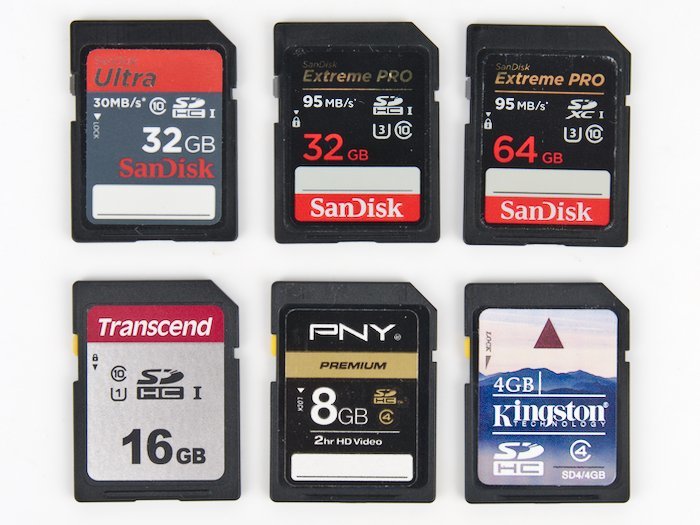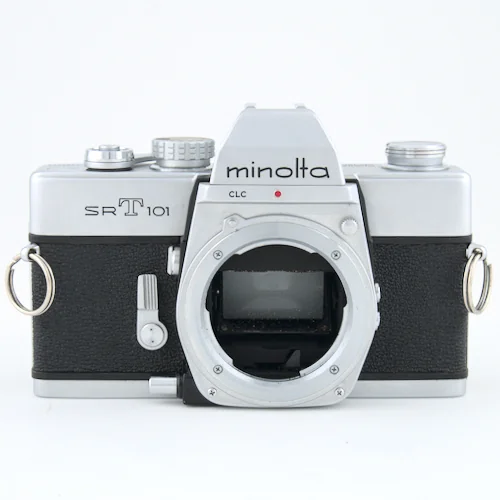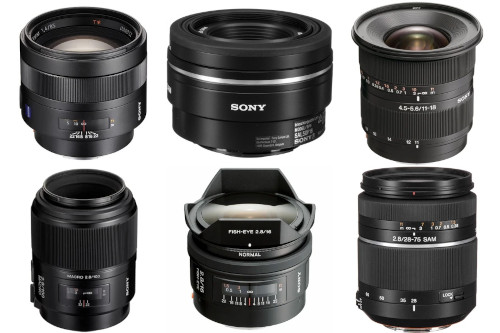
The 6 Best Lenses for the Sony A33
- Nathaniel Stephan
- Sony a33
- April 10, 2020
Table of Contents
The Sony A33 is a terrific camera. If you do not currently own a lens or are wanting for a different lens, this will talk about the best 6 lenses to use on your Sony SLT-A33.
Affiliate Advertising Disclosure
Outside the Shot is a participant in the Amazon Services LLC Associates Program, an affiliate advertising program designed to provide a means for sites to earn advertising fees by advertising and linking to Amazon.com.
As an eBay Partner, I may be compensated if you make a purchase. I also participate in affiliate advertising programs with KEH and Adorama. More can be found on the Affiliate Disclosure page.
Standard Primes
Sony 50mm f/1.8 SAM DT
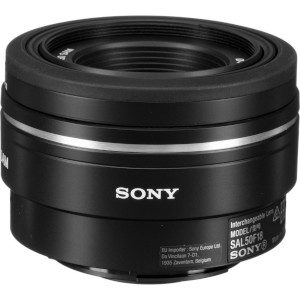
- Outstanding optics.
- Small and light weight.
- Can be difficult to find new.
- Smooth Autofocus Motor (SAM)
- Circular aperture.
See current price and more information on:
A wonderful combo of very compact size and lightweight. Fast and quiet autofocus is supplied by a built-in motor..
A circular aperture allows you to close down to f/4 and keep close to a circular aperture. This results in stunning bokeh and greater versatility in managing depth of field.
Minolta Maxxum AF 50mm f/1.7
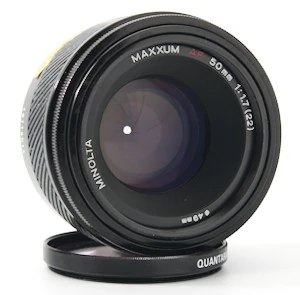
- Built-in lens hood.
- Amazing value.
- Light and compact.
- Widely available used.
- Coupled autofocus.
See current price and more information on:
This model was released by Minolta along with the introduction of the A-mount. Because of how old the lens is, the autofocus is controlled by a motor built into the A33 camera body.
Autofocus that is mechanically coupled can be rather noisy and laggy. If that is not a major problem for you the image quality is superb. {The bokeh is attractive and you’ll end up getting a classic look|You will get attractive bokeh and a classic image rendering.
Another significant benefit of the lens is the price. It is drastically cheaper when compared with the Sony 50mm f/1.8 and on top of that could possibly be the least expensive lens listed.
Sony 50mm f/1.4
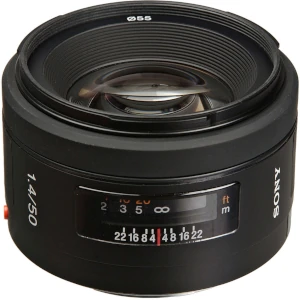
- Outstanding optics.
- Optical multi-coatings.
- Circular aperture.
- 55mm filter threads.
See current price and more information on:
Slightly faster when compared to the Sony or Minolta f/1.8, yet that can actually be important when you are working in low light. That of course comes at a larger cost.
It is still a light and small lens that balances nicely on the A33 and fits into just about every camera bag.
A potentially lower priced option is the Minolta AF 50mm f/1.4. Keep in mind that they can be tough to get in usable condition. It also relies on physically coupled autofocus, which is worse than lenses with built-in autofocus motors}.
Portrait & Telephoto Lens
Sony 85mm f/1.4 ZA
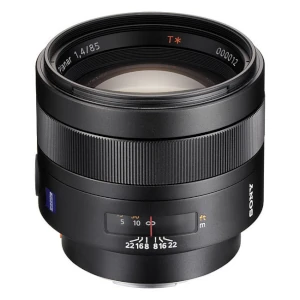
- Incredible bokeh.
- Excellent value used.
- T* coating to reduce flare and increase contrast.
- Astonishingly sharp wide open.
See current price and more information on:
Sony sought to flaunt what the A-mount is capable of. The lens was produced by Zeiss. The ZA (Zeiss Alpha) signifies that Zeiss created the lens only for the Sony A-mount.
This lens is awesome. Sharp corner-to-corner with vibrant colors that delivers stunning portraits.
A potential downside is that it’s a lttle bit on the heavy side because it’s built like a tank and the autofocus can seem slow. Take into account, that you’ll encounter similar issues with any f/1.4 85mm lens.
Minolta Maxxum AF 85mm f/1.4
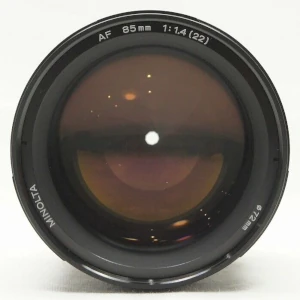
- Possible to find a good used deal.
- Superb image quality.
- Uses autofocus coupler.
- Double-Gauss design.
See current price and more information on:
In terms of cost, this lens fits between the other two. Acquiring a used copy in good usable condition will likely be challenging on account of a limited supply available.
The lens does have autofocus, but it uses a mechanical coupler and is driven by an in-camera body motor. This means the lens will be sluggish and relatively noisy.
The lens is an older 6 lens element Double-Gauss design. The upside to this is that images possess a classic look that are unable to be created by cutting-edge lenses that are built with far more elements.
Sony A33 Zoom Lenses
Sony 28-75mm f/2.8
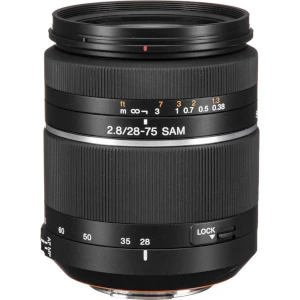
- Very usable zoom range.
- Great value used.
- Constant aperture.
- Smooth Autofocus Motor (SAM).
See current price and more information on:
A fast zoom lens that is outstanding for night events, travel, indoor shooting, and family photos. The autofocus is fairly quiet and the lens is well built.
The lens is often compared to the legendary Zeiss 24-70mm, but it is about half the weight and has a lower price. Both lenses produce professional photos.
Sony 55-200mm f/4-5.6 SAM DT
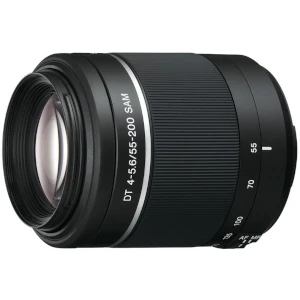
- Telephoto zoom range.
- Great for portrait or wildlife photography.
- Smooth Autofocus Motor (SAM).
- Inexpensive.
See current price and more information on:
A cheaper selection that still produces impressive results. Even though it is not a professional lens, accordingly so long as you do not expect all the bells and whistles, it is a very good lens.
For a mid-range telephoto zoom, it offers a terrific range for capturing pictures of children outdoors, sports, and wildlife.
The autofocus is quick and it renders sharp pictures. It’s made out of plastic, which helps with eliminating weight.
Sony 75-300mm f/4.5-5.6
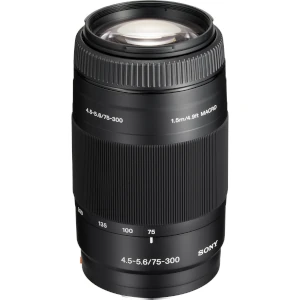
- Super telephoto zoom lens.
- Great for portrait or wildlife photography.
- 2.81 inches in diameter and 4.81 inches long.
- 55mm filter threads.
See current price and more information on:
This qualifies as a borderline super-telephoto lens due to the zoom range. It is a very good low-cost option for any time you desire a lots of reach.
The lens is only 4.8 inches (12.2 cm) long, 2.8 inches (7.1 cm) in diameter, and weighs 1 pound 2 ounces (510g). While not considered light, many pro telephoto primes and zooms are several times heavier than that.
For a little bit improved overall performance look for the Sony 70-300mm f/4.5-5.6 SSM ED G-Series, however count on paying around twice as much.
Wide Angle Lens
Sony DT 11-18mm f/4.5-5.6
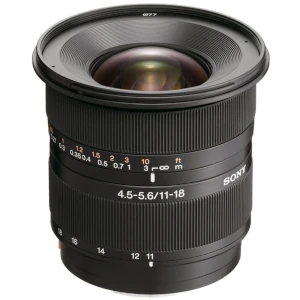
- Has a aspherical lens elements.
- Optical multi-coatings.
- Great value when purchased used.
- Circular aperture.
See current price and more information on:
Fantastic quality for the money if you want to shoot terrific wide angle images that a standard zoom can’t take. Distortion, especially of straight vertical lines is minor or non-existent unless you’re purposefully trying to get an distorted perspective.
Along with being good at shooting beautiful landscapes, it’s a terrific lens to travel with. The angle of view is wide enough so that when you see something you will be able to get everything in frame.
Sony 20mm f/2.8
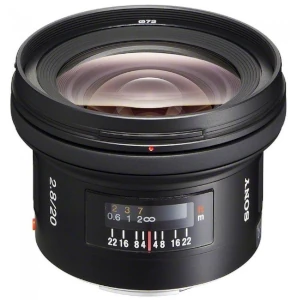
- Great for landscapes and architecture.
- Coated optics for clarity and definition.
- Rear focusing system for fast autofocus response.
- 72mm filter threads.
See current price and more information on:
It’s a well-corrected lens that does an excellent job of reducing distortion. Additionally, quite a lot of work has been put into reducing internal reflections and flare.
The result is an excellent lens that is well suited for astrophotography, landscape, and architecture photography. The rear focusing system means the front will not rotate so you will not have any problems using a polarizer or different filter.
Tokina AT-X 11-16mm f/2.8 DX II
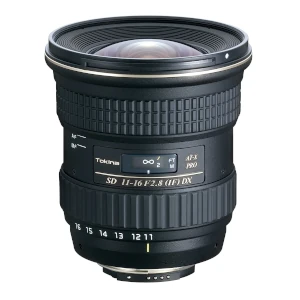
- Wide angle zoom lens.
- Hardened Alumite finish.
- Advanced optical coatings.
- All metallic moving parts.
- Designed for APS-C Sensors.
See current price and more information on:
It doesn’t have extraordinarily fast autofocus, but the AF/MF focus clutch means it is an ideal selection for manual focusing. A pull or push of the focus ring switches the lens from AF to MF or vice versa.
The Tokina has a larger aperture when compared with the Sony 11-18mm, which isn’t a major deal for landscape or architecture photos. Where you’ll notice a difference is during astrophotography. That’s a situation where you are going to want to have the 1-to-2 stop advantage the Tokina has.
Fisheye
Sony 16mm f/2.8 Fisheye
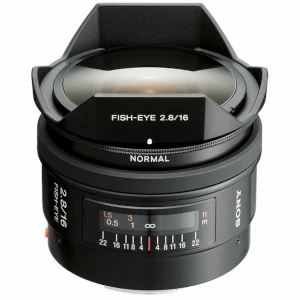
- Sharp corner-to-corner.
- 4 built-in filters: Normal, 056, B12, A12.
- 8 inch minimum focus distance.
- Aspherical and Extra-low Dispersion elements.
See current price and more information on:
Having built-in filters is an awesome inclusion because the lens has a petal-style hood which means a lens filter can not be attached to the front of the lens.
- 056 - Accented contrast for black and white photos.
- B12 - Correct color by eliminating red tones.
- A12 - Correct color by eliminating blue tones.
This lens has nearly everything you could want from a fisheye. You will obtain corner-to-corner sharpness without seeing vignetting while still taking advantage exaggerated distortion.
Rokinon 8mm f/3.5 Fisheye
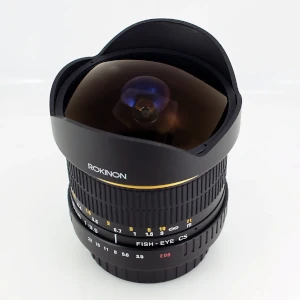
- Internal focus.
- 180 degree angle of view.
- Manual focus.
- Minimum focusing distance of 12 inches (0.3m).
- Designed for APS-C sensors.
See current price and more information on:
The lens features a curved front that means lens filters can not be used. It has a snap-on petal-style lens hood that you’ll want to ensure that it is included if you get a used copy.
Quality will be a little hit or miss because of the very affordable price. The majority of owners are really happy with the pictures they get. It is still important to thoroughly test the lens when you get it to ensure it isn’t a defective copy.
Macro Lens
Sony 100mm f/2.8 Macro
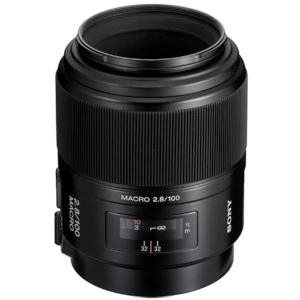
- 9 aperture blades.
- Focus range limiter.
- High contrast and resolution.
- 55mm filter threads.
See current price and more information on:
The perfect balance of size, working distance, and value for the Sony A33. The autofocus is somewhat loud, but for taking macro photos, manual focus is ideal.
For excellent output at 1x magnification the lens ought to be stopped down by a minimum of a couple of stops. By doing that you will get a larger depth of field, which is always important for macro photography.
Sony 50mm f/2.8 Macro
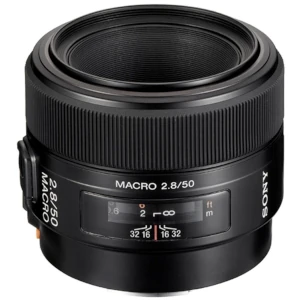
- 10.4 ounces (295g).
- Focus range limiter.
- Focus Hold button for full creative control.
- 55mm filter threads.
See current price and more information on:
The 50mm focal length is not ideal for 1x magnification on account of the limited working distance. At 1:1 magnification, the front of the lens will end up being about 2 inches (5 cm) from the subject.
This lens does a good job at tabletop, close-up, and copy work. It can be used to get closer to a subject than a 50mm prime, and is perfect for nature photography if you want to fill the camera frame with a small subject, like a flower.
Tamron AF 90mm f/2.8 Di SP A/M 1:1 Macro
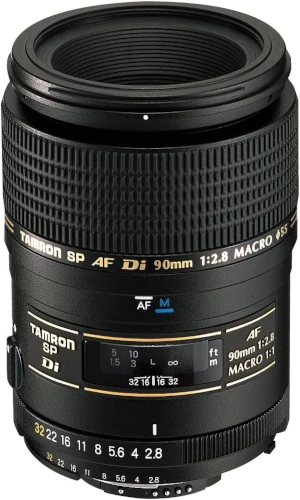
- Available in a variety of camera mounts.
- Improved resolution, chromatic correction, and optical coatings.
- Super Performance (SP)
- Focus clutch to switch between AF & MF.
See current price and more information on:
In addition to having autofocus, the focus ring feels great when manually focusing. Stopped down at least a couple of stops and you will get sharp images.
Furthermore, be cautious when ordering the lens as it’s offered for several camera lens mounts.
Used A-Mount Camera Lens Prices
Pricing is continuously changing. During the past couple of years, interest in film photography has been increasing. As there are Minolta 35mm film cameras that use the A-mount, some upward pressure is added to the cost of lenses.
The Sony A-mount also doesn’t have a sizeable share of the market. Because of this, a smaller number of third party choices are available and the lenses built by Sony are oftentimes on backorder.
To get the best price on what you want to buy, check out prices on multiple websites. For pre-owned lenses, be ready to pay for when you come across a good deal as they generally won’t last very long.
What Lens Mount Does the A33 Use?
The Sony A33 uses the Sony A-mount. It is also the same as the Minolta A-mount. This is due to Sony buying Konica Minolta’s imaging division in 2006.
The A-mount was engineered by Minolta for the introduction of interchangeable lens cameras with autofocus in 1985. It’s still Supported by Sony.
Standard Lens Cap Size
55mm, but honestly the sizes are sporadic. Earlier Minolta lenses have 49mm filter threads.
There are also numerous lenses that have larger filter threads than 55mm. It isn’t hard to find to see 77mm ro 72mm. It would have been helpful if Sony lenses needed only 2 or 3 different filter sizes.
